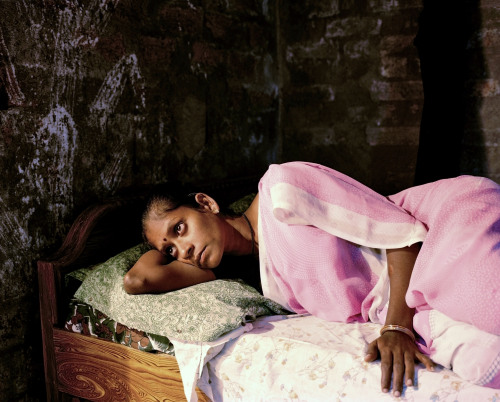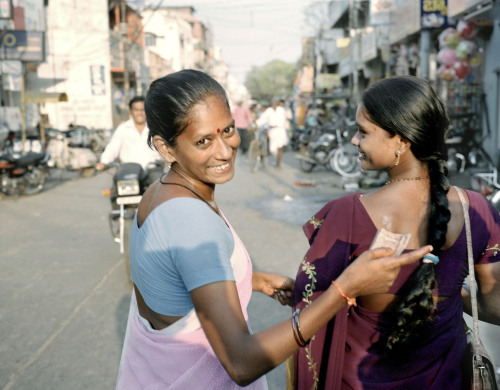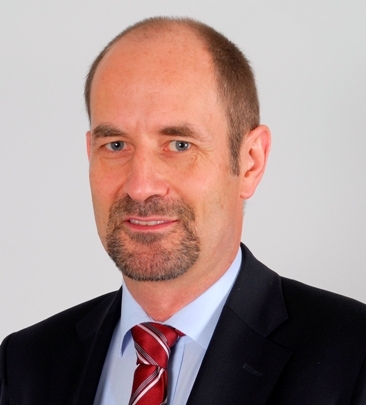
Global Fund photos show how treatment can beat worldwide epidemic
A photographic exhibition in Seoul aims to demonstrate the value of HIV/AIDS treatment, and encourage more funding from the Korean government to fight the virus globally.
The Global Fund to fight AIDS, TB and malaria has teamed up with Magnum Photos to focus on people living with HIV/AIDS around the world and to show how treatment programs can help them.
Eight photographers followed HIV patients receiving treatment through Global Fund supported programs in nine countries over four months to show the issues they face.
Those suffering from the incurable virus have often faced prejudice and discrimination, which can stop them from accessing the treatment they need.
The photographs on display at the Seoul Arts Center from tomorrow aim to combat preconceptions that contracting HIV is an automatic death sentence. Showing “before and after” shots of people who have received treatment aims to prove that people can live long lives with the correct treatment and care.
The exhibition is to include shots by American photographer Jim Goldberg, who captured people living in Andhra Pradesh on India’s east coast, which has the highest HIV prevalence in the country.
One of his subjects, Satyaveni Kamadi, is pictured looking listless and frail while lying on a bed at the start of her treatment on an antiretroviral program. She, her husband, Ravi, and their four-year-old daughter, Hema Latha, are all HIV positive.
A photographic exhibition in Seoul aims to demonstrate the value of HIV/AIDS treatment, and encourage more funding from the Korean government to fight the virus globally.
The Global Fund to fight AIDS, TB and malaria has teamed up with Magnum Photos to focus on people living with HIV/AIDS around the world and to show how treatment programs can help them.
Eight photographers followed HIV patients receiving treatment through Global Fund supported programs in nine countries over four months to show the issues they face.
Those suffering from the incurable virus have often faced prejudice and discrimination, which can stop them from accessing the treatment they need.
The photographs on display at the Seoul Arts Center from tomorrow aim to combat preconceptions that contracting HIV is an automatic death sentence. Showing “before and after” shots of people who have received treatment aims to prove that people can live long lives with the correct treatment and care.
The exhibition is to include shots by American photographer Jim Goldberg, who captured people living in Andhra Pradesh on India’s east coast, which has the highest HIV prevalence in the country.
One of his subjects, Satyaveni Kamadi, is pictured looking listless and frail while lying on a bed at the start of her treatment on an antiretroviral program. She, her husband, Ravi, and their four-year-old daughter, Hema Latha, are all HIV positive.

Though she was ill and depressed when she started the program, a later picture by Goldberg shows the 23-year-old walking and laughing in the street ― offering a glimpse of how her health and outlook quickly improved after starting treatment.
The Global Fund also reported that Satyaveni has joined a women’s HIV support group, and would like to train as a tailor in future.
Other Magnum photographers Jonas Bendiksen, Alex Majoli, Steve McCurry, Paolo Pellegrin, Gilles Peress, Eli Reed, and Larry Towell traveled to different countries including Mali, Russia, Switzerland, Rwanda, Haiti, Vietnam, South Africa and Peru to capture images of other patients before and after treatment.
AIDS has killed almost 30 million people worldwide since the 1980s, but the Global Fund says the “quiet global revolution” of antiretroviral treatment has enabled millions people infected with HIV to live healthy lives nowadays.

“We have seen in the last ten years a real revolution in terms of AIDS treatment and people’s access to care,” said Global Fund Director for External Relations Dr. Christoph Benn, explaining how antiretroviral treatment had gone from being expensive and inaccessible to the matter of taking two pills a day to help sufferers stay healthy. He said the fund wanted people to appreciate the millions of lives saved since it was formed in 2002.
“There has been a real paradigm shift ― a revolution in public health that we have never seen before with a global epidemic ... We wanted to say to decision makers this has happened with your support, and to encourage more support in the future.”
The Global Fund is the main financer for AIDS, TB and malaria treatment worldwide with approved funding of over $21 billion in 150 countries.
Since its creation in 2002, it has funded life-saving antiretroviral therapy for 3 million people and is helping people in 35 Asian countries to the tune of $5.1 billion for HIV, TB and malaria-fighting projects.
Last year, it issued $32.8 million in malaria and TB grants in North Korea, channeling the cash through UNICEF, with $25 million already distributed.
But the fund now faces a shortfall for its next round of programs.
The Geneva-based organization has announced that it can make no new grants to expand its health programs until 2014, saying problems in the global economy have tightened the budgets of the donor countries it relies on.
South Korea has so far pledged $23 million to the Global Fund but the amount was relatively small compared to the size of its economy and the funds pledged by other countries.
The exhibition here aims to encourage the government to give more in the future, and also help to end the stigma about HIV/AIDS in Korea, where a low prevalence rate has kept the virus largely out of the public eye.
“The more education about the disease the better,” said Benn.
“This is a treatable disease and people can lead normal lives with the proper treatment. We want to tell people that there is no need to stigmatize it.
“There is a low prevalence here so many people will not know anyone with this disease, so education is extremely important.”
The exhibition in Seoul to offer the Korean public an insight into the lives of those fighting AIDS and HIV has already been well received in New York, Tokyo, and Paris after first being displayed in Washington D.C. in 2008.
The Magnum Global Fund Access to Life exhibition will be held from Dec. 23 to March 4 at Seoul Arts Center in Seocho-gu from 11 a.m. to 7 p.m. daily.
For more information call (02) 2277-2438 or go to the www.accesstolife.seoul.kr website.
General admission is 10,000 won with tickets at 8,000 won for concessions and 5,000 won for children.
By Kirsty Taylor
(kirstyt@heraldcorp.com)
-
Articles by Korea Herald








![[Hello India] Hyundai Motor vows to boost 'clean mobility' in India](http://res.heraldm.com/phpwas/restmb_idxmake.php?idx=644&simg=/content/image/2024/04/25/20240425050672_0.jpg&u=)











